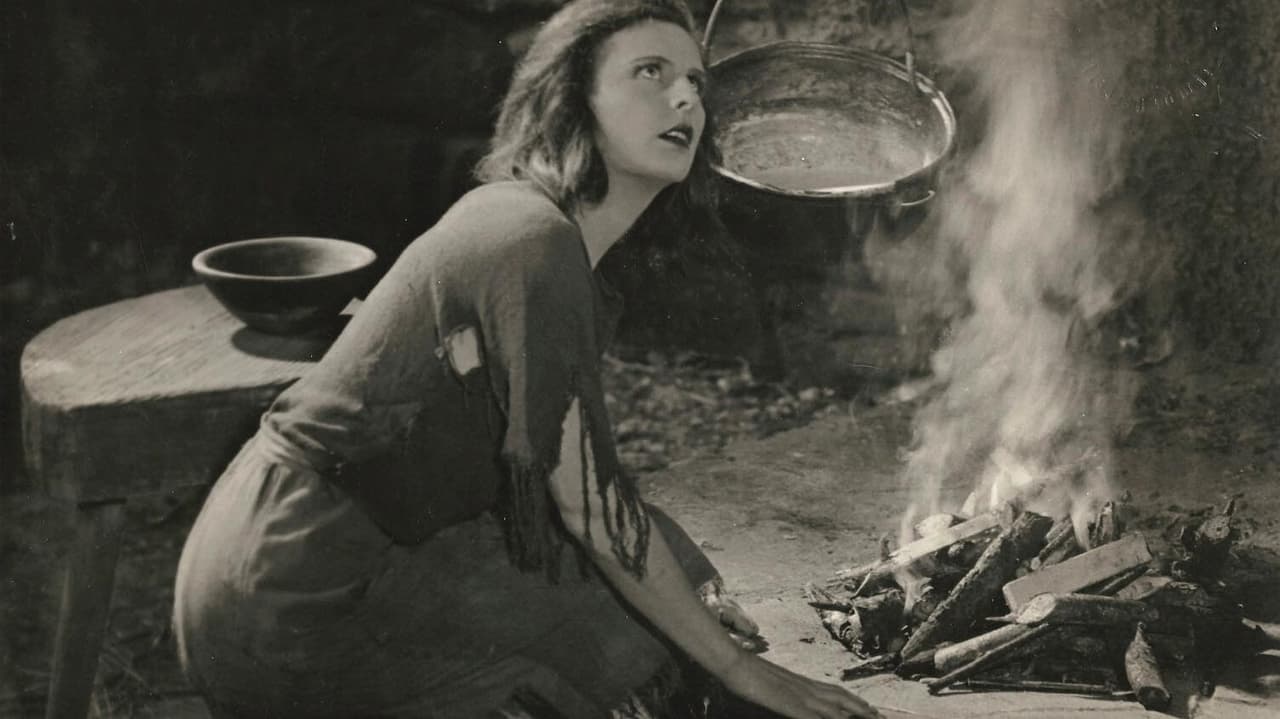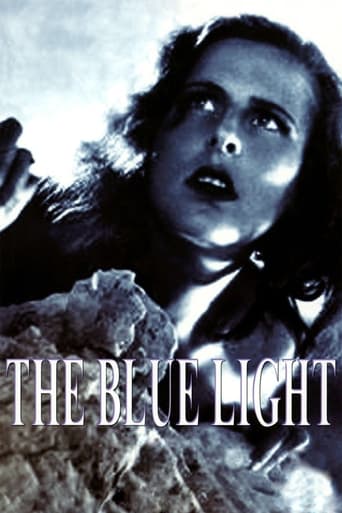

Leni Riefenstahl proves that she has an extraordinary mastery of cinematographic techniques in her directorial debut. One of the best entries in the "Mountain Film" genre, Das Blaue Licht conveys a strong sense of atmosphere. It transports its audience into the world of a little folkish, insular Germanic village sometime in the relatively recent past.The mountain overshadows the villagers just as it overshadows everything in this story. Climbing it can be read as a metaphor for human ambition which, telling, comes at the destruction of the lives of others and environmental degradation.Riefenstahl uses a simple but effective framing device to tell her story, which serves to situate it firmly in the realm of the village's folklore. Moody lighting helps add to the atmosphere and she displays effective use of parallel and contrasting scenes. The scale of the mountain and its treacherous, narrow paths give the film a nicely-claustrophobic feel. Certainly more effective as a director than as an actress, the tragedy is that Riefenstahl would later waste her skills making political propaganda.The contrast between Riefenstahl's character and the insular, narrow-minded country people is effectively conveyed. (Ironically, it is these same bigoted people from the Bavarian country town folk who would later form the Nazi party's biggest support base. By portraying the countryside dwellers for the bigots they are, this film could almost be read as an attack on what would become the NSDAP's support base.) As others have commented, the male lead is drawn straight from the writings of Goethe and is effective as a nuanced, compassionate counterpoint to the villagers.Ultimately, this film is highly recommended, provided one feels comfortable watching Riefenstahl's early output on its own merits and separating the artist's early work from her political beliefs and later propaganda films.
... View MoreHow astonishing can it be to see how a fictional story can metaphorically translate the life of someone? Even more when it is that very person the one who invents the story of her destiny? This film has to be the answer.Here we have a genius of composition and visual rhythm, in her first attempt, which guesses everything that would come.What would this goddess (in several meanings) be thinking, when she embraced this adventure? Lenni was a student of the human body, and therefore, of her own. Student of the Hellenic harmonic dynamics, who understood the power of movement, applied to cinema. She understood it so well she would pay for her whole life for that. In this film she is, simultaneously, observer and observed object. She, the body, is one of the reasons for this film to be. At the same time, we have a story about a "special" woman. She is special because she has access to a secret, she knows a path. That secret has a geographical identity, there is a division between sacred and mundane, mountain and city. The preciousness, surrounded by an aura of inaccessibility, to reach it is a privilege of beauty, of commitment and in the end, of love. And Lenni is at the centre of that sacredness, and there at the moment when it breaks. And she is doomed to be rejected forever for keeping such a secret. That's Junta, as it is Lenni. That's the prophecy, this story, written by Riefenstahl, which is a story even inside the film, a book with her photo on the cover! This woman changed more than the history of cinema, she did more than to enlarge the possibilities of visual contemplation and, consequently, beauty concepts. In her coursed work (coursed because it is good!) she helped to change the face of the world, having her as the ambiguous element, always. In this film we have her, linking the sacred mountain and the city, linking two worlds. Now check the geography of the place. The mountain, the power of its various sequences, the strength of that geographical object. The woman, climbing the mountain, the power of contrast. Junta, under the effect of the full moon, exhales sensuality, which works still today (when we are totally addicted to images that aim at sensuality). It works because it's genuine, a woman who is more that it seems. Note how the sweater reveals the shoulder, a provocation no doubt, a desire to place the body at the centre, and to enhance Man in relation with Nature.In this metaphorical mythology, Germanic and Nordic, see how the symbols are materialized, and shot. The composition of the shots of mountain climbing and specially, of Vigo getting into the sacred crystal area is genius, the set of a potential Valhala, and the expression of Junta as she finds out about the intrusion reveals everything.This film still obeys too much to the codes of silent film. I saw the sound version, but apparently there is a silent one, since in those days the transition was still being made. Anyway, the sound in this film is uncomfortably placed, and dialogue does little more than directly replace the inter titles of the silent. And the montage still doesn't exist with the supreme sense that Lenni would give it, years later, and that affects rhythm, because the work of the montage masters (Eisenstein, Kalatzov, Vertov...) totally depends on the rhythm images themselves can give, for what happens inside every shot, and for the cut between shots. That dynamic does not exist here, and the codes are dated, and i suppose they might already be dated than. But Riefenstahl is body, face, she is expression. She is movement, dynamic, rhythm. But is all that both as an observer, sensitive and visual, and as an interpreter, sensual (sexual!) and intense. That's her genius, here.My opinion: 4/5 see this, several times.http://www.7eyes.wordpress.com
... View MoreUnlike the previous reviewer, I have an excellent print of "The Blue Light" that Leni Riefenstahl sent to me a few years ago. This is truly a magnificent film and along with "Tiefland" should be for what this great lady is remembered for. "Triumph of the Will" and "Olympia" are stunning documentaries but "The Blue Light" and "Tiefland" are outstanding movies and a tribute to the greatest female film director ever.
... View More`Das blaue Licht' (The Blue Light) tells the legend of Junta, a strange woman living in the Alpine heights above a Tyrolean village, who has privileged access to a cave of crystals. On full-moon nights a blue light emanates from this secret grotto, luring young men from the valley to seek out the force of the radiant beam. Their quest invariably end in death and causes the towns-people to vilify junta. A painter from Vienna, Vigo, befriends the outcast woman. He becomes her protector and falls in love with her. Following her one blue-lit night, he discovers the way to the cave. He draws a map, thinking that the safe passage to the grotto will serve the best interest of both Junta and the villagers. The towns-people arm themselves with tools and climb to the cave, plundering the valuable crystals and celebrating their new found fortune.Riefenstahl's film -(fantasy) sanctifies nature and reflects a fascination with beauty and harmony. The photography of this picture is visually stunning, and Riefenstahl's masculine beauty and physical abilities make her the perfect choice for the role of Junta. `Das blaue Licht' is one of the last great Weimar films and a must see' not only for movie buffs.
... View More